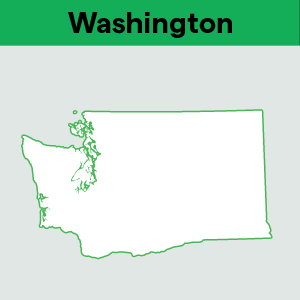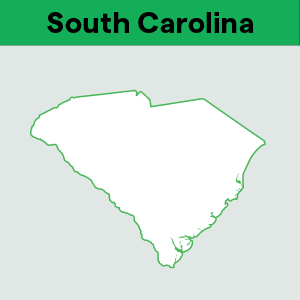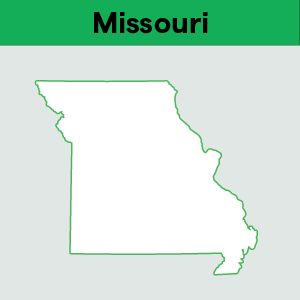What is Fulfillment by Amazon (FBA)?
by February 10, 2025
Fulfillment by Amazon is a program that allows e-commerce sellers to store their merchandise in Amazon’s fulfillment centers, and delegate the packing, fulfillment services, shipping, and even customer service for those products to Amazon. Also called FBA for short, the program gives sellers more flexibility by taking these responsibilities off their plate, and giving them more time to grow their business. There are some big benefits to FBA for e-commerce sellers. However, those benefits come at a cost. We’ll share everything you need to know when it comes to Fulfillment by Amazon. Let’s dig in.
Benefits of Amazon FBA
Once a seller is signed up for Fulfillment by Amazon, they’ll be able to take advantage of a list of benefits the fulfillment process offers.
- Inventory management and storage: FBA sellers can store their inventory at any of Amazon’s fulfillment centers. This also enables Amazon to ship products out quickly, even if the product isn’t being sold on Amazon marketplace.
- Get that Prime badge: FBA sellers will gain access to the Amazon Prime members. Qualified FBA sellers that are prime-eligible will be awarded the Amazon Prime badge. We all know what that means! The seller will be able to take advantage of Prime’s speeding shipping guarantees.
- Customer service management: If you are a small team, being available to customers 24/7 might seem like a big ask. With FBA, Amazon handles this for you. Meaning Amazon will be available to answer questions, concerns, returns, and refunds, 24/7 on your behalf.
- Decrease your shipping costs: We all know Amazon has some strong relationships with shipping companies. Sellers enrolled in FBA will be able to take advantage of these relationships and as a result, pay less in shipping. FBA sellers might even be able to offer free two-day shipping for certain shopping cart amounts.
- Reputable name: Signed up with the FBA program means sellers will have Amazon’s name associated with your product. For buyers who look for that name recognition before purchasing, this is a huge benefit. Consumers are comfortable with Amazon’s name, and might even be more likely to seek out sellers that have this association.
Try TaxJar for free
TaxJar offers one platform to manage every aspect of sales tax compliance from calculations to reporting to filing. Try our sales tax compliance platform for 30 days, completely free with no obligation.
Get startedAmazon Fulfillment fees
Sounds like a great setup, right? But how much does it cost to be a FBA seller? Here are a few fees associated with Amazon’s fulfillment program:
- Inventory storage fees
- These are charges based to store all products in a fulfillment center.
- Fulfillment fees
- Fees that are charged per unit for picking and packing your orders, shipping and handling, customer service, and product return.
- Removal order fees
- These fees are applicable if you require Amazon to return or dispose of your inventory in a fulfillment center.
- Long-term storage fees
- Assessed monthly for all items stored in a fulfillment center for more than 365 days.
- Unplanned services fees
- You’ll be hit with this fee when inventory arrives at a fulfillment center without proper preparation or labeling, making unplanned services required.
- Returns processing fees
- Free return shipping isn’t so free (for the seller anyways!). This fee is charged on orders when Amazon provides a customer with free return shipping.
To understand what FBA costs would look like for you, take advantage of the Fulfillment by Amazon Revenue Calculator on Seller Central. You’ll add your information and get an estimate of how much becoming a FBA seller would cost you.
Sales tax considerations
Sales tax has changed quite a bit for Amazon sellers over the past few years. As a result of the 2018 South Dakota v. Wayfair Supreme Court ruling, states were allowed to pass marketplace facilitator laws. These laws require that large online marketplaces like Amazon, Walmart, eBay, Etsy and others collect sales tax on behalf of 3rd party sellers selling on the platform.
This is mostly great news for Amazon sellers! But, as with anything sales tax related, there are a few caveats. You can read a whole lot more about how marketplace facilitator laws affect Amazon sellers here, but the important things to know about Amazon fulfillment centers are sales tax are:
- Storing inventory in an Amazon fulfillment center still gives your business sales tax nexus and an obligation to collect sales tax from buyers in that state
- However, since marketplaces collect on your behalf, you don’t have to worry about collecting sales tax in nexus states if you only sell on marketplaces
- Some states, though, still require that you register for a sales tax permit and file sales tax returns, even if a marketplace collects on your behalf.
- If you sell via Amazon and through your own online store, such as via Magento or Shopify, you are still required to collect sales tax in your nexus states from your buyers on those channels
So as you can see, while Amazon now collects sales tax on sellers’ behalf, storing inventory in an Amazon fulfillment center can still create a sales tax compliance headache for Amazon sellers.
That’s why it’s vital for Amazon sellers to know where their products are stored! Amazon does not publish comprehensive information about where their fulfillment centers are located. So using independent research, news stories about new fulfillment centers, interviews with current FBA sellers, and even postings on Amazon’s job boards, TaxJar has come up with what we hope is a true and complete list of Amazon Fulfillment Centers in the United States and Canada. We will strive to keep this list updated as new fulfillment centers are built.
Ready to automate sales tax? Sign up for a free trial of TaxJar today.








